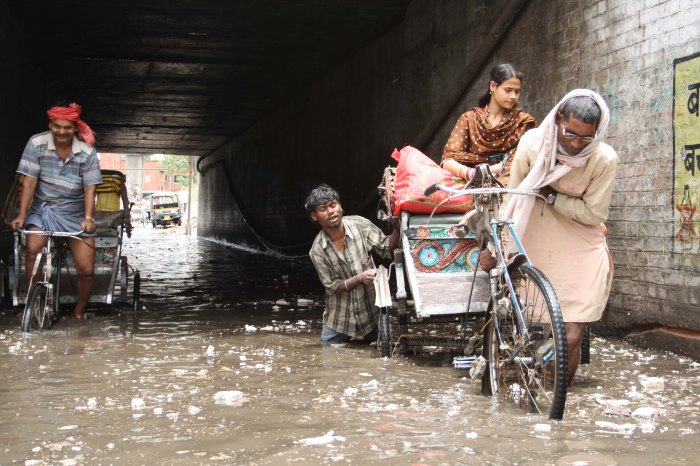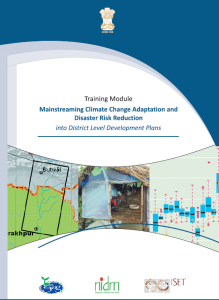
Floods have been an integral part of the Indian sub continent. What is worrying is the change in flooding patterns, the greater incidences of flash floods, water logging, erratic climate behaviour and spiraling flood related damages. Gorakhpur, in Uttar Pradesh, a highly vulnerable flood prone area is no different; After all 17 of its 19 blocks regularly face the wrath of the waters.

Damaged crops, loss of soil fertility, heath & sanitation issues, death & destruction, all are a regular feature during floods here. It is mandatory for every Indian district to develop an annual District Disaster Management Plan (DDMP), then why is it difficult to under
stand and address the risks of disasters like floods and climate change? What prevents the plans to fructify into decisive action at the time of need? Is it that the existing plans are generally more response centric, so every time floods occur, we tend to flounder & fail.
A project that undertook to integrate Disaster Risk Reduction & Climate Change Adaptation in Gorakhpur, tried to answer just these questions. It sieved through data & ‘government orders’, interacted with the community & various departments, and finally came up with an effective plan.
Project supported by CDKN, & undertaken by Gorakhpur Enviornmental Action Group (GEAG) and Institution for Social & Environmental Transition (ISET) along with National Institute for Disaster Management (NIDM), GoI & District Disaster Management Authority (DDMA).
One of the observations was that school premises are often used for shelter & relief centres during floods. An effective pro active approach would be to ensure that sites for future school must be safe and elevated. Also the school should not just be earthquake but also flood resistant. Students lack knowledge on basic disaster preparedness & safety, which can easily be rectified through mock programmes & education. Other suggestions include active promotion of tree plantation program, arrangement of alternate education options at times of disaster, and non usage of schools as disaster relief camps or as food grain storage. Recommendations that are both doable and practical.
For other concerned departments like the District administration, Agriculture or the Animal department, gaps were identified and recommendations made. A city resilience plan for the city was born, which was inclusive of the community and the city officials.

This bottom-up, integrated planning for disaster management has made Gorakhpur a model district. A training module that the National Institute of Disaster Management (NIDM) uses to train disaster management officials country wide, uses this tried and tested approach. All the other 75 districts in Uttar Pradesh have been directed to follow the process taken up in Gorakhpur.
The process document and policy brief detail how climate change was integrated in the Disaster Risk Management Plan in Gorakhpur district, and also serve as a template for other districts to emulate and become more resilient.